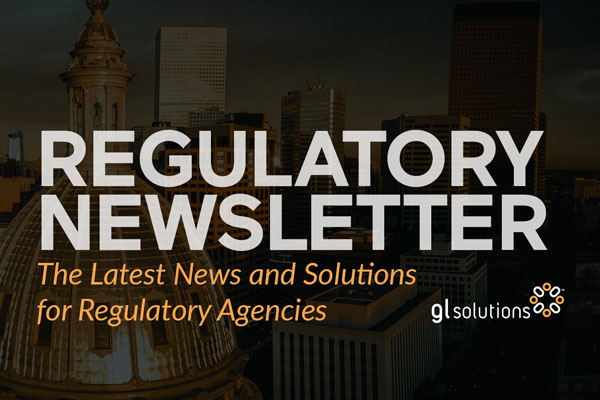Often agencies do not know how they work, lack the ability to abstract and generalize work methods, cannot describe those methods to IT support, lack the leadership skills to engage staff, and finally, cannot overcome change management obstacles.
When regulatory agencies confront challenges like updating old software system, managing personnel, ensuring process consistency, responding to external stakeholders, or achieving higher levels of efficiency, among others, managers immediately confront an absence of knowledge about how these complex processes work.
How do people do their jobs? Agencies rarely organize their work into known business processes. Over the years, staff learn to perform the work through trial and error and anecdotally from peers and managers.
Lack of known and agreed business processes results in numerous challenges:
Low Performance
Government personnel systems combine formal and demanding discipline thresholds with a dearth of performance metrics. An organization without hierarchy or real authority encourages cultural problems with accountability, among others.
Failing Expectations
External stakeholders, legislators, board members and licensees require agencies to change to meet new outcomes and service levels. Laws change. Staffing resources change. People expect government to perform like private institutions. Changing outcomes requires that you change how things are done – the business processes. If business processes are unknown or nonexistent, the organization lacks the foundation for modifications.
Technology Obsolescence
Agencies must use information technology to manage large quantities of data and complex business requirements. Agencies depend on one another to provide information in their business processes. All of these systems age – and at an accelerated pace given the rate of IT innovation.
Low performance, failing expectations and technology obsolescence eventually lead to agencies seeking a new IT solution, though still lacking that ability to effectively participate in software projects. The capability of an organization to organize and understand business processes depends on several factors including management and analytical resources.
Computer systems model and facilitate the operations of people performing a task. Developing a model from seemingly disparate events and facts requires abstract analytical abilities. Integrating staff and computer systems into a collaborative effort requires leadership and change management abilities. Many business processing units lack both. Why don’t these organization simply get better?
Why not discover the business processes and procure a solution to meet these needs?
Knowledge
While they may be able to tell you about specific requirements, a lack of familiarity with software functionalities prevents them from extrapolating. I have a need. I can see a software functionality. I cannot tell you how the feature would help me meet my need.
Skills
The employees do not know how to conduct process analysis or modeling. Beyond that, technology solutions require years of experience or training to understand. Growing data volumes and business complexity make the skills gap larger.
Abilities
Process analysis requires an ability to abstract complex patterns. Users tend to be reactive to direct experiences. They can tell you what they don’t want when they see it.
Resources
Agencies chronically underestimate the amount of time required to understand business processes, conduct process revisions, and implement a software system. Most often, the same people with full time jobs, the SMEs, are asked to tackle a software implementation in addition to existing full-time jobs.
Agencies needing to replace or modify an existing information system often don’t know where to start. They report problems such as, “No staff has a full understanding of the process start to finish, or is not able to effectively communicate it.” While using the system, the lack of staff consistency leads to reports like, “There is not sufficient documentation for staff to use to execute our processes accurately and consistently.” When the business needs modifications to match changing requirements or expectations, agencies report, “Agency cannot get basic changes it requires, such as updating a renewal fee, done in a timely manner.”
Software Development Lifecycle (SDLC)
At some point, agencies respond by hiring systems integrators who solve business process problems using software systems. Integrators commonly utilize project management methodologies designed to elicit, document, develop and deploy functionalities which meet business requirements. Integrators extract specific functional requirements from unstructured business processes.
Most PMMs reflect a structured software development lifecycle:
- Process discovery and optimization
- Planning and procurement
- Requirements gathering
- Design and architecture
- Development and configuration
- Testing
- Deploying and release
- Operations maintenance
Users and SDLC Conflicts
While the SDLC does promote a logical method for understanding, modeling and implementing software to meet business process requirements, end users struggle to participate in a highly analytical activity with limited abstraction abilities. The vendor can take care of knowledge and skill gaps. But, if the SDLC calls for a model of a business process and the end users do not understand the work they do in a consistent way, or they forget steps, or they simply are unable to follow a decision tree, software design flaws emerge. The system won’t actually work the way that one user or another needs to perform his or her work. Frankly, most agencies do not understand their work to be defined processes with process steps at all.
SDLC Guide
For a step-by-step explanation about the Software Development Lifecyle, see our Implementation page.
Run, Grow and Adapt
GL Solutions helps governments run, grow and adapt. To learn more, explore our website, call us at (971) 337-2659 or email us at hello@glsolutions.com.
Time to Modernize
GL Solutions helps your regulatory agency run, grow and adapt through modern software and automation that helps solve your agency’s greatest challenges. To learn more, contact us.
To receive the latest regulatory news delivered to your inbox each week, subscribe to our newsletter.


